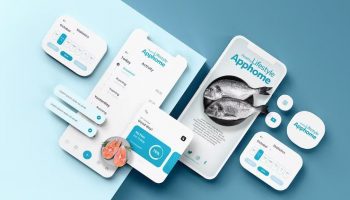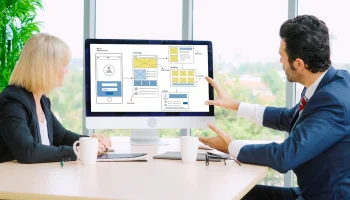A good travel site catches the audience with vivid pictures and captivating travel descriptions. Plus, it provides potential travelers with all the information they need to plan a future trip.
Modern trends in the development of tourist websites not only make web resources user-friendly but also make it possible to present visual material in the most advantageous formats for perception.
However, the main feature of developing a website for a travel agency is the variety of needs of visitors. The tasks pursued by the target audience are most conveniently grouped into two categories:
- booking a specific tour;
- Search for interesting travel options.
Are you looking to hire experts in travel website design with the aim of creating your new website? Then, this article can help you out.
Travel Website Design

Clients from the first category come to the site with a specific purpose. All they need is information about available offers in a convenient form and the ability to place an order.
But we must not forget about those who have not yet decided on the direction and date of the trip.
However, with the help of a good quality travel website design, you can turn these visitors into customers.
This is the reason; you need to tell them about the most interesting offers and help them make the right choice. The best idea is to give travel website development to professionals.
What Are The Features That You Wish To Have In A Travel Website Design?

You may have thought of creating a travel website all by yourself. But if you are not capable enough, it’s better to get the help of a professional who knows how to design a travel website.
For example, you are a project director engaged in making telemedicine apps or a healthcare website where customers can buy health supplements online. You can do it well.
Yes, you can go to various offshore software testing centers that offer professional services.
The same can happen for travel when you design a website based on travel. But we think you must know what the must-have features of a quality travel agency website are.
Responsive Website Design
The first element is a responsive and mobile-friendly website. According to a study, 50% of the traffic comes from mobile-friendly devices.
You need to consider these stats and make your website mobile-friendly. However, a mobile-friendly travel website ensures:
- Better user experience.
- Increased conversion rates.
- Increased visibility.
SEO Friendliness
Just like the responsive design, search engine optimization is another key factor element of a successful travel website.
There are as many as 200 factors that determine the ability of your website to stay on the top of the search engine.
However, with the right SEO in place, you can generate leads and turn them into business.
Clear And Structured Website Navigation
Yes, you should always be careful about navigating your website structure. It has a huge impact on the conversions and sales.
For instance, if you successfully create a proper section for different available packages on your website, it will enchain the attention of the traffic for sure!
Clear Pricing
Another key feature you must have while you are engaged in your travel website design is clear pricing.
If you have a dedicated section where you precisely mention the package and its prices, then you could easily increase traffic on your website.
Keep in mind that travel enthusiasts want to have a precise idea of package costs. However, many travel agencies wish to keep people floating regarding this issue.
Other than that, successful travel website designing must arm your website with core features like:
- Effective payment integration.
- Predictive Search.
- Trip weather forecast.
- Informative destination and activity detail.
- Google map integration.
- Social media integration.
How To Make A Travel Website Yourself?

When creating a travel site, it is important to consider the interests of all visitors. The main page should contain the following functional elements:
- in the header – a form for searching and booking tours;
- at the top of the main block – examples of the most popular packages and destinations;
- at the bottom – news or blog posts.
To create a website for a travel agency that will be convenient for guests, clearly plan its structure. Regardless of the company’s specialization, the resource must contain:
- several thematic categories: beach vacation, romantic travel, etc.
- section with a list of tour packages by country or main directions;
- information about the company;
- section with useful information and tips;
- contact page with directions;
- when creating a website for a tour operator – information for partners.
If the company has enough time and free resources, a blog can be posted on the portal.
Articles about resorts and attractions will help shoppers make decisions and attract random visitors from search engines.
To make your travel site more useful, add an online chat to communicate with the manager.
So, guests can quickly clarify information of interest and get advice on the selection of a tour. Remember that creating a website for a travel agency is an element of the overall sales system in the business.
Competent consultation will help you complete the deal and make a profit.
Design:
The creation of a website for a travel agency does not impose strict restrictions on the external design. The main thing is that the chosen template creates a positive attitude. For this reason, it is worth abandoning dark color schemes in favor of light shades.
When creating websites for travel agencies, natural colors are often used.
Moreover, for traditional beach destinations, blues and yellows are great. Companies selling vacation packages to vacation homes can be based on white, interspersed with green and brown.
If it is difficult to highlight the dominant direction, you can opt for a neutral scale, giving preference to light shades.
Conclusion
The top’s design is important in the formation of the right emotional mood. Large thematic photos do an excellent job with this task.
Romantic landscapes in twilight tones, bustling European streets, or foggy mountain peaks – choose those photos that can wake up your target audience.
A thorough analysis of client needs will allow you to create an effective website. Think about what the buyer wants – professionals will take over the technical implementation of ideas.
Additional Reading:




























